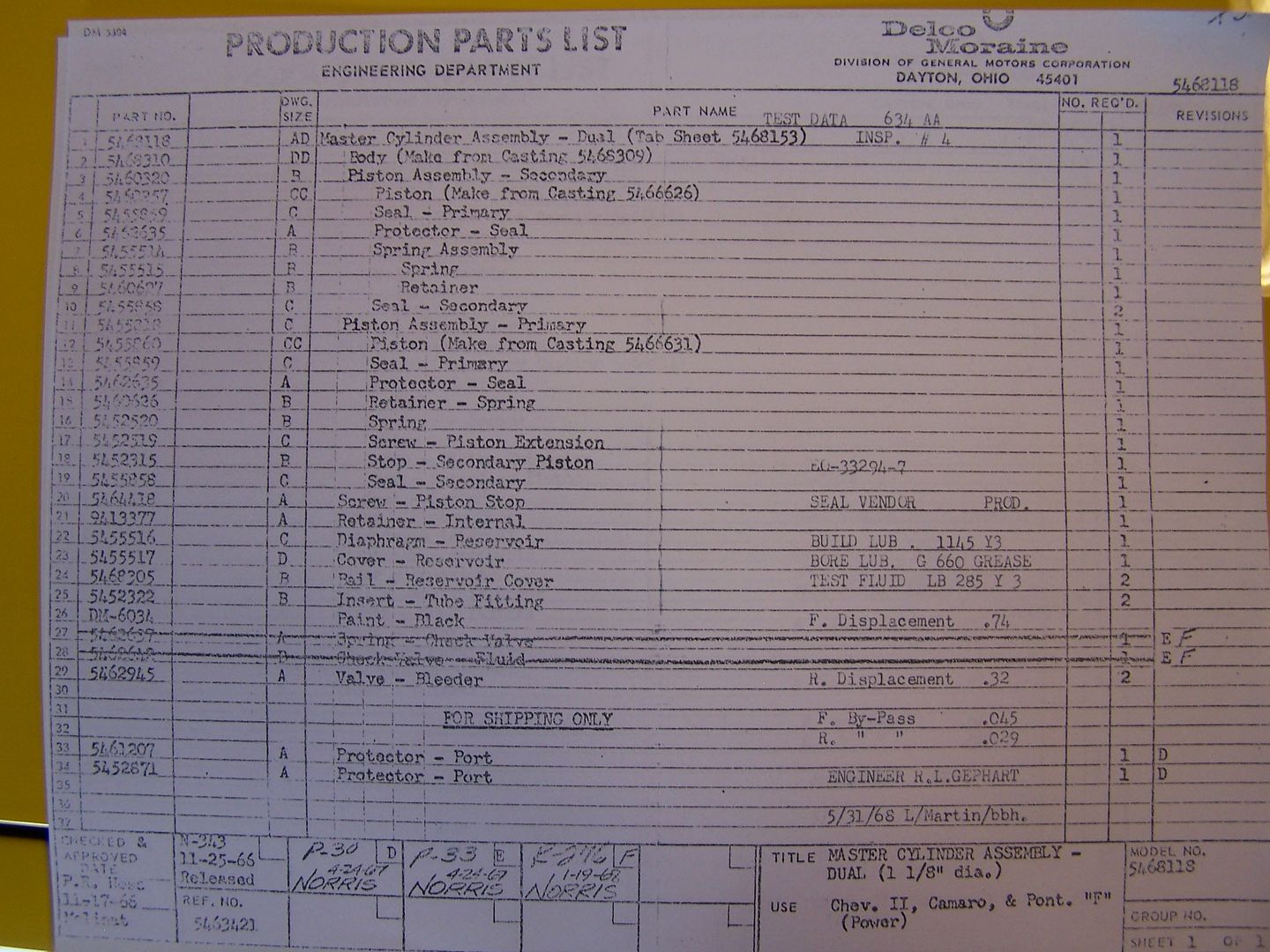16
General Discussion / Re: New (but correct) MC - painted black, bare, or ?
« on: August 25, 2015, 03:44:59 PM »The for sure survivors I've looked at have had the master cylinder painted. According to the latest new addition NCRS 68/69judging manual it states the following: "The master cylinder was painted a low-gloss or foundry black. A semi-circular machined area at the front of the casting was machined after painting and so should be natural finish. The flat at the front has PG stamped in it for power brake units and DC for manual brake units." And "The boss that the brake lines thread into is machined flat after painting and will be natural finish." JohnZ has stated “I was there in the assembly plants in the 60's, and Delco-Moraine painted the master cylinders and brake calipers black prior to machining; I never saw one unpainted.”
I purchased a late May69 power booster/master cylinder from Jere Stahl that had been given to him from Delco Moraine Engineering. On the production parts list sheet it calls for it to be painted black (see item 24).
Ok, now I'm a bit confused. I ordered the MC and booster from Camaro Specialties (www.camaros.com), and their website, confirmed in a conversation with owner Bob, says that the '67 - '68 front power disc brake/rear drum MC should be coded "WT".
Is that the case?
Thanks...
Chris


